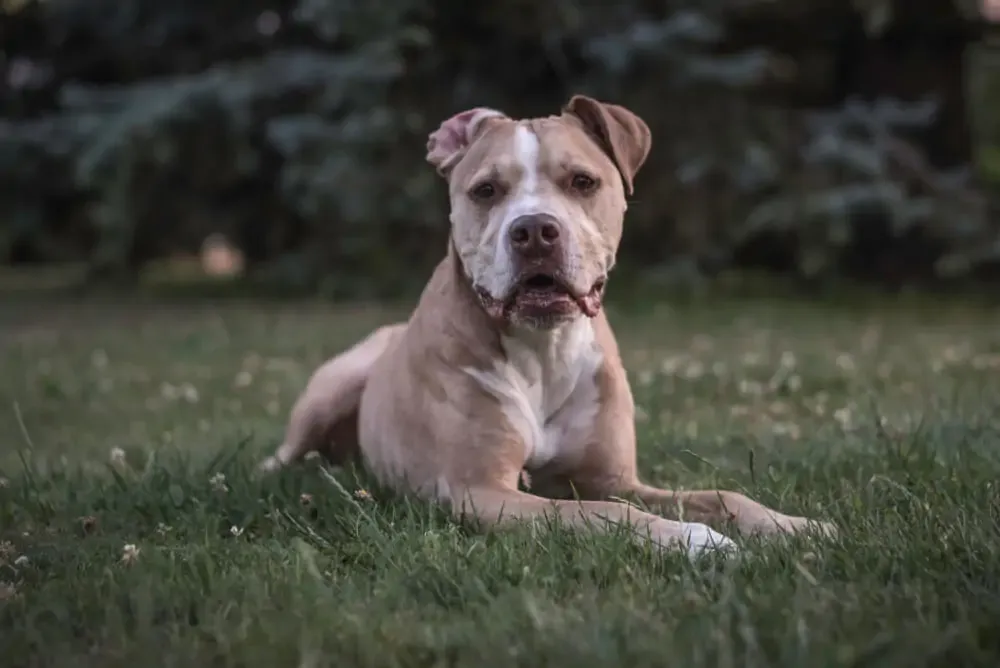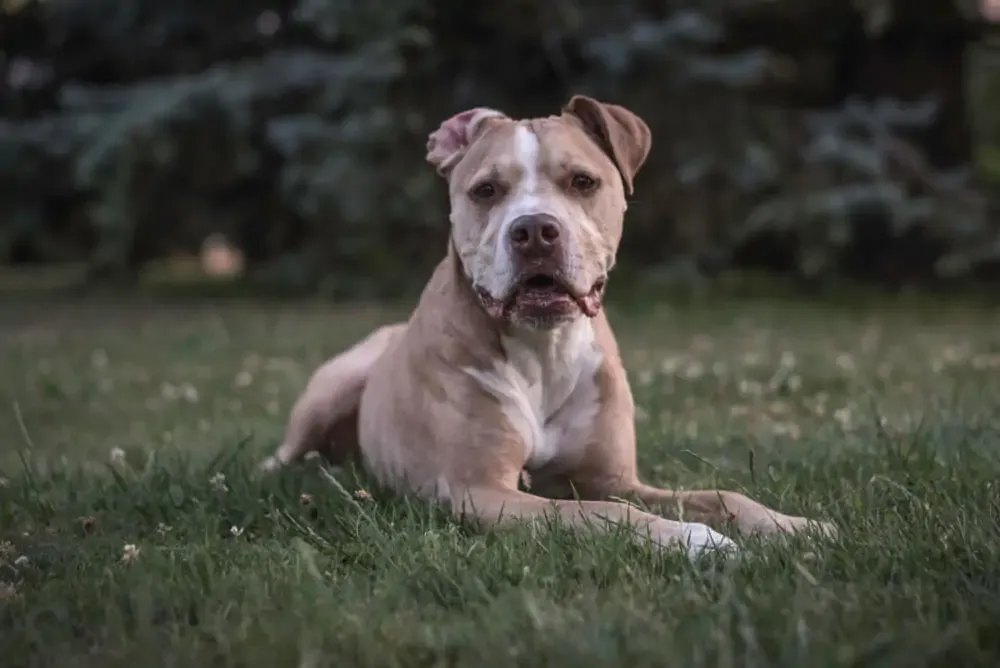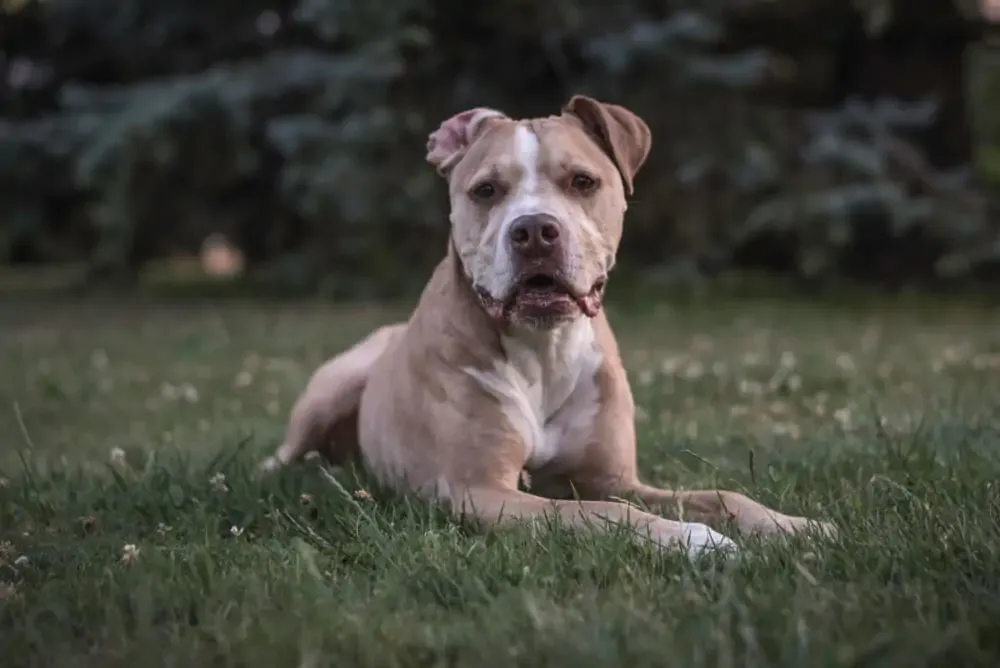Choosing the optimal diet for your Blue Nose Pitbull is paramount for their health, longevity, and overall well-being. These magnificent dogs, known for their striking appearance and powerful build, have specific nutritional requirements that differ based on their age, activity level, and potential health predispositions. Just as with any Pitbull type, understanding these needs is crucial to prevent common health issues and ensure they thrive. The right food can make a significant difference, supporting their robust musculature, vibrant coat, and energetic lifestyle. Neglecting proper nutrition, especially during their formative puppy months, can lead to serious conditions like hip dysplasia. This guide will delve into the essential aspects of selecting the best dog food for your cherished Blue Nose Pitbull, ensuring they receive all the vital nutrients for a happy and healthy life.
Understanding Your Blue Nose Pitbull’s Unique Nutritional Needs
Blue Nose Pitbulls, like all Pitbull types, are muscular, active dogs that require a diet rich in high-quality ingredients to support their physique and energy levels. Their specific needs are shaped by several factors, which owners must consider when choosing the right dog food.
Age-Specific Requirements (Puppy vs. Adult)
The nutritional demands of a Blue Nose Pitbull puppy are vastly different from those of an adult. Puppies are in a critical growth phase, developing bones, muscles, and organs, which necessitates a diet higher in protein, fat, and specific minerals. Medium breed Pitbull puppies typically mature between 12 to 14 months, while larger individuals may continue to grow until 24 months of age. During this intense growth period, it’s vital to feed a diet formulated for large breed puppies or all-life stages that is approved by AAFCO. Incorrect puppy food can contribute to debilitating conditions such as hip and elbow dysplasia due to rapid growth rates and improper calcium-to-phosphorus ratios. Therefore, selecting a food specifically designed for their age and expected adult size is critical for proper skeletal development.
Activity Level and Energy Demands
Blue Nose Pitbulls are generally high-energy dogs that require significant exercise to maintain their muscular build and mental well-being. Their active lifestyle necessitates a diet that provides sustained energy. This means a good balance of complex carbohydrates for fuel and healthy fats for readily available energy and a healthy coat. Dogs with higher activity levels will naturally burn more calories and require a more calorie-dense food compared to a less active or older Blue Nose Pitbull. Always monitor your dog’s weight and adjust portion sizes accordingly to prevent obesity, which can exacerbate joint problems. For an active dog, adequate caloric intake is crucial to support their daily adventures and keep them energized.
Common Health Concerns and Dietary Support
While generally robust, Blue Nose Pitbulls can be prone to certain health issues that can be managed or mitigated with a proper diet. Skin sensitivities and allergies are common in many Pitbull lines, manifesting as itchy skin, rashes, or hot spots. Foods with novel protein sources (like salmon or duck) and limited ingredients can often help identify and reduce allergen exposure. Additionally, as noted, hip and elbow dysplasia are concerns, especially in larger, fast-growing breeds. Dog foods that include joint-supporting ingredients such as glucosamine and chondroitin can be beneficial for preventive care and managing symptoms in older dogs. Omega-3 fatty acids, found in fish oil, also play a crucial role in reducing inflammation and promoting a healthy coat and skin. A diet focused on these aspects can greatly improve your Blue Nose Pitbull’s quality of life. Consider incorporating healthy things to add to dog food for additional nutritional benefits.
Key Nutrients for Blue Nose Pitbulls
A balanced diet for your Blue Nose Pitbull should focus on several key nutrients that support their unique physiology. Understanding these components will help you make informed decisions when choosing their food.
Protein: Building Blocks for Muscle
Given their athletic build, Blue Nose Pitbulls thrive on a diet rich in high-quality animal protein. Protein is essential for muscle development, repair, and overall bodily functions. Look for dog foods where a named meat source (e.g., chicken, beef, lamb, fish) is the first ingredient. These provide essential amino acids that are crucial for maintaining their powerful musculature and supporting a strong immune system. Adequate protein also helps keep them feeling full and satisfied.
Fats: Energy and Coat Health
Healthy fats are a concentrated source of energy and vital for a shiny coat, healthy skin, and the absorption of fat-soluble vitamins. Sources like chicken fat, salmon oil, and flaxseed are excellent. Omega-3 and Omega-6 fatty acids are particularly important; Omega-3s help reduce inflammation, beneficial for joint health and skin conditions, while Omega-6s are crucial for skin and coat health. Ensure the food contains a balanced ratio of these essential fatty acids to promote optimal health.
Carbohydrates: Sustained Energy
While often misunderstood, complex carbohydrates provide sustained energy for your active Blue Nose Pitbull. Ingredients like sweet potatoes, brown rice, and oats offer dietary fiber, which aids digestion and promotes gut health. Avoid foods with excessive fillers like corn, wheat, or soy, as these can be common allergens for some dogs and offer less nutritional value. Good carbohydrates ensure your dog has the energy needed for play and exercise throughout the day.
Vitamins and Minerals: Overall Health
A complete and balanced dog food will include a variety of vitamins and minerals to support every bodily function, from bone health to immune response. Calcium and phosphorus are particularly important in the correct balance for skeletal development, especially in puppies. Antioxidants like Vitamin E and C help combat free radicals and support immune health. Ensure the food adheres to AAFCO nutrient profiles to guarantee it provides all necessary micronutrients.
Joint Support
Considering the predisposition to joint issues in powerful breeds, ingredients that support joint health are highly beneficial. Glucosamine and chondroitin are natural compounds often added to dog foods to help maintain cartilage integrity and reduce joint pain. Many dog owners also look for long lasting dog chews for large dogs that can offer some dental and joint benefits. These supplements, alongside Omega-3 fatty acids, can be a proactive measure to support your Blue Nose Pitbull’s mobility as they age.
 Blue Nose Pitbull eating kibble from a bowl, focused on nutrition
Blue Nose Pitbull eating kibble from a bowl, focused on nutrition
Top Picks: What to Look For in Recommended Dog Foods for Blue Nose Pitbulls
While specific brand recommendations can vary, understanding the qualities of a superior dog food is key. When searching for the best dog food for your Blue Nose Pitbull, prioritize brands that meet or exceed AAFCO nutrient guidelines for all life stages or specifically for large breed puppies/adults. Look for formulations that feature real meat as the primary ingredient, avoiding excessive by-products or vague meat meals.
High-quality dog foods will often include a thoughtful blend of whole grains or easily digestible carbohydrates, healthy fats, and a full spectrum of vitamins and minerals. Some brands, even those with a 4-star rating, might offer superior value when considering their ingredient quality, the company’s manufacturing standards, and overall cost-effectiveness. It’s not always about the highest price but the highest quality ingredients and appropriate nutrient ratios for your dog’s specific needs. For more general advice, you might want to review best food to feed your dog.
 Healthy Blue Nose Pitbull enjoying a meal, emphasizing optimal diet
Healthy Blue Nose Pitbull enjoying a meal, emphasizing optimal diet
Important Feeding Considerations for Your Blue Nose Pitbull
Beyond choosing the right food, how you feed your Blue Nose Pitbull is just as important. Thoughtful feeding practices can prevent common issues and optimize their health.
Portion Control and Monitoring Weight
Overfeeding is a common problem that can lead to obesity, putting unnecessary strain on your Blue Nose Pitbull’s joints and overall health. Always follow the feeding guidelines on the dog food package, but remember these are just starting points. Factors like your dog’s age, activity level, and metabolism will influence their actual caloric needs. Monitor your dog’s weight and body condition regularly. You should be able to feel their ribs easily without seeing them, and they should have a visible waist when viewed from above. Adjust portion sizes as needed, consulting with your veterinarian for personalized advice. If your dog needs to gain weight, explore home remedies to get my dog to gain weight.
Transitioning Foods
If you decide to switch your Blue Nose Pitbull’s food, do so gradually over 7-10 days. Abrupt changes can cause digestive upset, including vomiting or diarrhea. Start by mixing a small amount of the new food with their old food, gradually increasing the proportion of the new food while decreasing the old. This allows their digestive system to adjust smoothly.
 Close-up of a Blue Nose Pitbull eating dog food, highlighting food quality
Close-up of a Blue Nose Pitbull eating dog food, highlighting food quality
Conclusion
Selecting the best dog food for your Blue Nose Pitbull is a critical decision that impacts their health from puppyhood through their senior years. By focusing on age-appropriate nutrition, high-quality protein, balanced fats, complex carbohydrates, and essential vitamins and minerals, you can support their strong build, high energy, and minimize the risk of common health issues like hip dysplasia and skin sensitivities. Always prioritize foods that meet AAFCO guidelines and consider formulations that offer joint support. Regular monitoring of their weight and gradual food transitions will further ensure their well-being. Partner with your veterinarian to tailor a nutrition plan that perfectly suits your individual Blue Nose Pitbull, helping them lead a long, healthy, and vibrant life.
 Blue Nose Pitbull next to a bowl of dry dog food, representing healthy feeding
Blue Nose Pitbull next to a bowl of dry dog food, representing healthy feeding
Sources
- IAMS: How to Transition Your Puppy to Adult Food, IAMS
- Hazewinkel HAW. Nutrition in relation to skeletal growth deformities. J Sm Anim Practice. 1989; 30:525-630
- AAFCO Dog Food Nutrient Profiles, Association of American Feed Control Officials, 2018 Official Publication, pages 155-159
